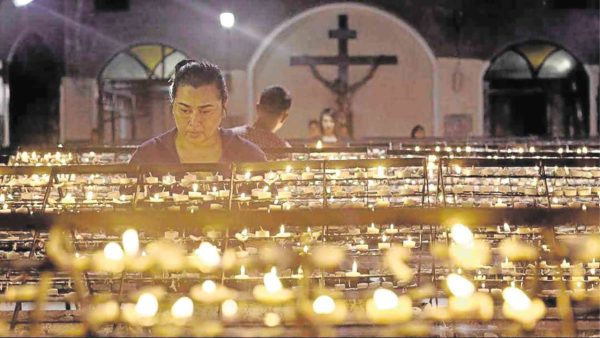Actress Elizabeth Oropesa considers herself blessed that she still gets to sink her teeth into meaty roles, even though the industry seems enamored with the young and inexperienced.
While women of her generation are relegated to mother (and, perish the thought, grandmother) roles, Elizabeth effortlessly lands lead roles like in Adolfo Alix Jr.’s “Mrs.,” Rae Red and Fatrick Tabada’s “Si Chedeng at si Apple” and her latest, Ronald Espinosa Batallones’ “Excuse Me Po,” an entry in this month’s Cine Filipino fest.
“For women of a certain age, it’s very seldom we would come across movies like these in our country,” she told the Inquirer. “Unlike in England or the United States, where senior actors are considered a big deal.”
She asserted that the industry should value seasoned artists because of “our colorful life experiences” that inevitably “enrich our performances.”
The award-winning actress was recently invited to the Far East Film Festival, in Udine, Italy, to speak on the rich history of Philippine cinema.
She is more than qualified to discuss the topic—having worked with such esteemed filmmakers as Ishmael Bernal, Celso Ad Castillo, Danny Zialcita and Eddie Romero. After all, she was one of the brightest luminaries of the second Golden Age of Philippine cinema.
Although digital technology is a huge boon, in terms of cutting expenses, she pointed out that the old way of shooting with film had forced her batch of actors to be extra efficient on the set.
“We couldn’t afford to make mistakes,” she recalled. Film stock was expensive. “If you reach take three, the director would get mad at you. So, we had to do well on the first take. That was our training.”
Crown Seven beauties (from left): Beth Bautista, Amy Austria, Elizabeth Oropesa, Lorna Tolentino, Alma Moreno
and Daria Ramirez
She recounted that when Bernal’s “Nunal sa Tubig” was released in 1976, few people understood it. “It was way ahead of its time. But now, it’s considered a classic.”
In 1977, she ventured into film production, under her own firm dubbed El Oro, with Manuel “Fyke” Cinco’s “Hagkan Mo ang Dugo sa Kamay ni Venus,” as its first and only offering. “It didn’t do well because of its theme. It was about reincarnation.”
“I left the El Oro office to (manager) Manay Ethel Ramos and her group,” she related.
The El Oro office, located at the Burke Building along Escolta, became the hangout of a posse of movie writers that formed a successful and powerful publicity bloc in the 1970s through the 1990s.
“Even though I was away, I took care of them,” she said of her friends in the industry. “All the top movie companies had offices at the Burke Building.”
In the 1970s, she likewise met Chinese martial artist Meng Fei, who eventually became her second husband (she first got married at age 16, but was widowed at 23.)
“He saw me on TV. He had done a movie [“Twin Fist of Justice”] with Vilma Santos here,” she reminisced. “With the help of his Chinese producer friends, he was able to trace me. One day, he just showed up at my house. He really courted me!”
They also made a movie (“The Return of Bruce”) in 1977. Then, they eloped and ran away to Taiwan, but soon had to part ways because of her strict mom.
Eleven years later, in 1986, he returned to her life, and they tied the knot. “It was a happy and quiet marriage. We had a son. It lasted 10 years.” (She has four children, now all grown-up.)
When her marriage with the Taipei-based actor ended, she returned to the biz full-time and picked up where she left off. In 1999, she scored a rare grand slam, winning all of local Tinseltown’s best actress awards for Joel Lamangan’s “Bulaklak ng Maynila.”
After that banner year, she gathered all her trophies and presented them to her mother. “I told my mom that after all these achievements in show biz, I wanted to try something different … alternative medicine.”
She explained that her father, who was a Native American, was a doctor. “That was my original dream. But my mom wanted me to be a star.”
La Oropesa, or Elizabeth Freeman in real life, slowed down for three years, to study and earn her diploma. She graduated summa cum laude at the Atlantic University in Virginia. She also took her doctorate in Sri Lanka and finished Traditional Chinese Medicine at the University of the East Ramon Magsaysay Memorial Medical Center. “I’m a licensed acupuncturist and herbalist.”
She now runs a clinic beside her home in Quezon City, where she shares her knowledge with patients from all walks of life.
In 2002, she had a “celebration ceremony” with former partner, gym physical therapist Joel Valdez. They were a couple for six years.
These days, she also dabbles in painting. “An artist-friend encouraged me to try it. Now, I have a small gallery at home, too.”
Call it the second, or perhaps the nth, blossoming of La Oropesa.
